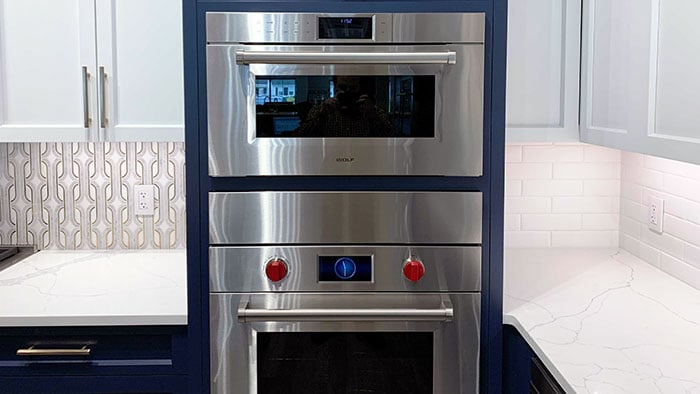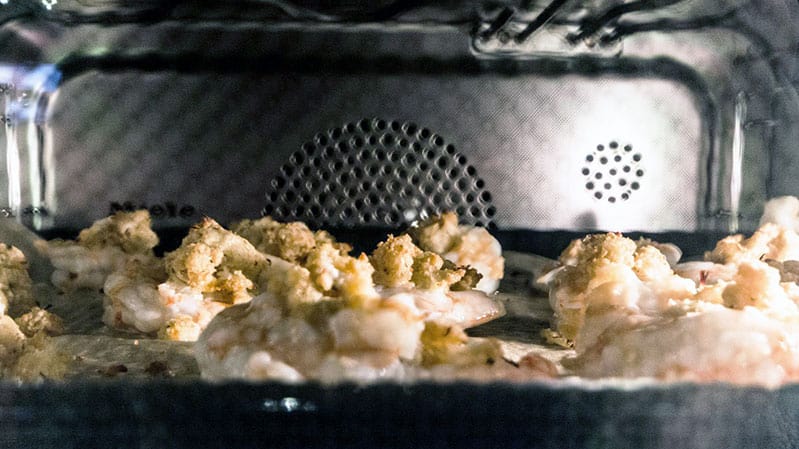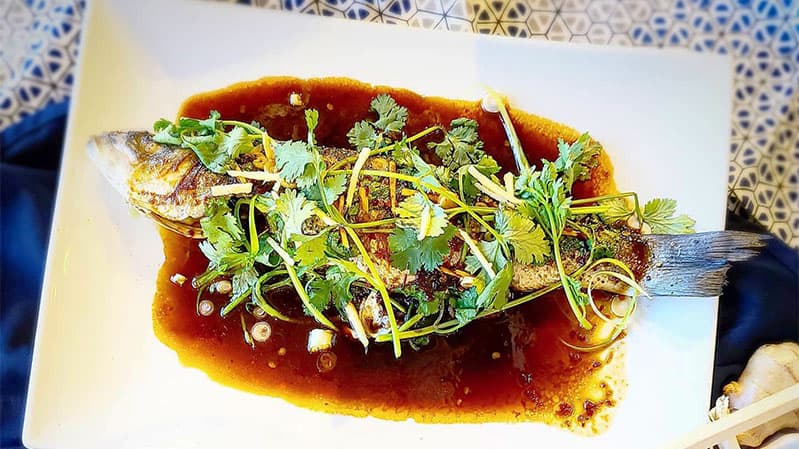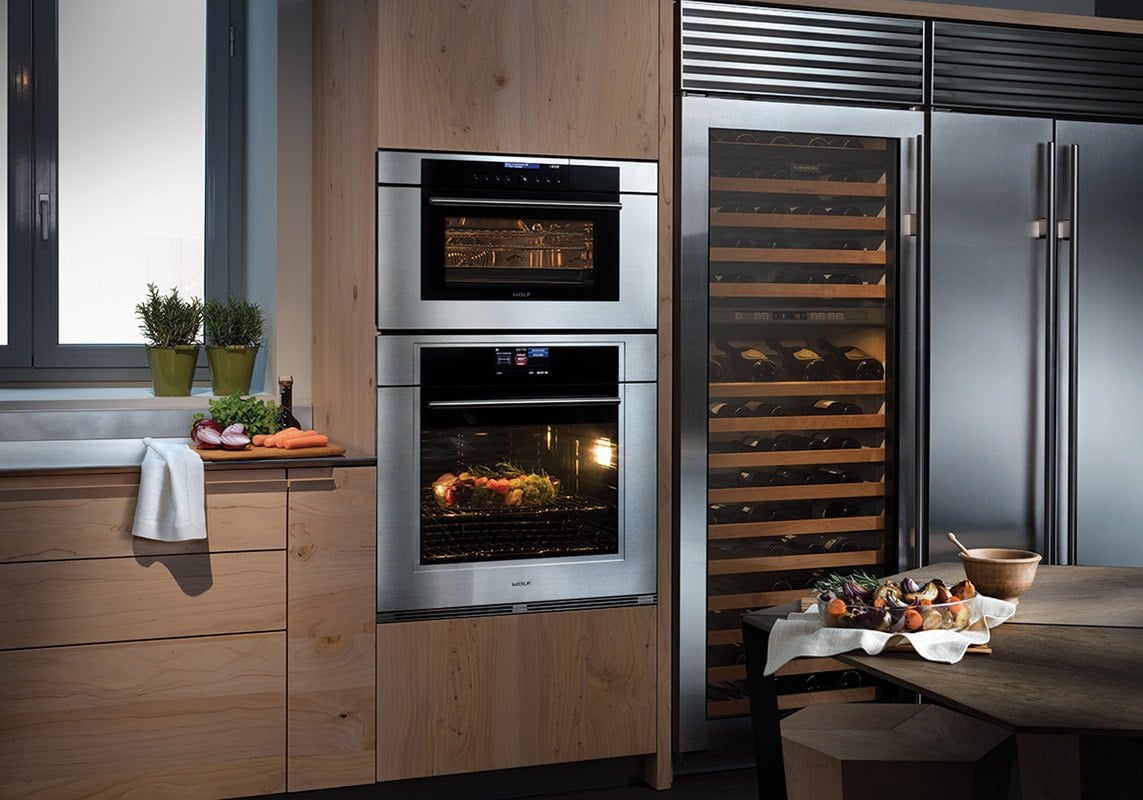Steam ovens are extremely versatile and can cook in a variety of things.
One of my favorite things to cook is seafood, especially fish! Not only does fish cook quickly and easily in the steam oven, but it's also extremely healthy and tasty.
In this article, you will learn how to cook fish in a steam oven in a variety of ways.
Let's get started.
What is a Steam Oven?
 Wolf Steam Oven at Yale Appliance in Hanover
Wolf Steam Oven at Yale Appliance in Hanover
When the oven is turned on, the oven heat turns water into steam. Many steam ovens have a removable reservoir that needs to be refilled when you use the oven while some high-end models are connected to a water line.
A steam oven has a valve to release the pressure of the steam, similar to a pressure cooker or a tea kettle. Steaming works well for delicate foods such as custards and seafood.
Many people also use steam for cooking vegetables, poultry, meats, and casseroles, plus you can use it to reheat by adding moisture back into leftovers.
How to Cook Fish in a Steam Oven

I have cooked everything from fillets to whole fish in the steam oven, and the results have always been more than perfect.
The temperature is the same no matter what type of fish or size you are cooking. I use the default setting of Steam at 212/210 F. Steam is an extremely forgiving way to cook fish that would normally require some technique and precision.
It's a "low-risk, but high reward" style of preparation which really allows the natural flavor of fish/seafood to come through. The key is understanding how to incorporate additional depth into it.
When seasoning your fish, aromatics are recommended for the whole fish.
A light marinade would work better for a fillet. The whole fish can be stuffed with herbs, ginger, scallions, shallots, garlic, lemongrass, and citrus.
Adding in wine sherry, vinegar, soy sauce, or chili paste will also add a little extra depth with either of these cooking styles.
If you choose a marinade, go with something salty and bold with herbs, chilies, honey, or citrus. Just keep the marinating time under 30 minutes, so the fish doesn't become ceviche.
A simple salt, pepper, and olive oil blend will also work if you are pressed for time.
If you are steaming a whole fish, I recommend something on the smaller side like a Branzino, Porgy, trout, black bass, Boston mackerel, red snapper, rockfish, flounder, or striped bass plus more.
If you can get get the fishmonger, or clean and descale it, that would also make your time in the kitchen shorter and less messy.
The general rule of thumb would be to gauge the size of the whole fish by the size of your dinner plate. Anything larger should be broken down into filets.
A whole fish, depending on the size, will take around 10-12 minutes to steam.

If you would like to enjoy a steamed cod, halibut, salmon, or sole, this would be best as a filet.
You can purchase a large piece, then break it down into fillets yourself, or purchase the smaller individual pieces. Make a quick marinade, and keep it in the fridge to allow the flavors to absorb.
I wouldn't recommend using anything like a crust or any whole spices or seasonings. The steam will make the surface of the fish very wet, which will cause the crust to slide off.
Laying the fish on a bed of aromatics will also enhance the depth of flavor. This can include the liquid or whole sprigs of herbs and more.
A fillet of fish will take around 6-8 minutes to steam, depending on the size, of course.

Most seafood steams beautifully. Anything from scallops to lobster, shrimp, and bivalves will shine in this environment. A couple of types of fish to avoid cooking in steam are tuna and swordfish because they are prone to toughening up.
A flat shallow pan should work best when steaming either a whole fish or fillet. I wouldn't recommend doing a "one-pan" meal with this fish in the steam oven because of the residual moisture collected in the pan while the fish is cooking.
This will make your vegetable soggy and is not an ideal cooking vehicle for any grains, especially because the cooking times will vary.
You can, however, cook them all in the oven at the same time, which will allow you to have a complete meal in a matter of minutes.
You would have to start with your grains first, followed by the fish, then lastly, your vegetable. Staggering the times when each item goes in the oven will allow everything to finish simultaneously for a complete healthy meal.
If you don't have a steam oven, you can place your fish on a plate, place it in a steamer basket inside a pan, and set it on top of boiling water. You can also try the traditional Asian method with a bamboo basket inside a water bath.
If neither of those methods is available, use some tin foil to create a rack for your plate to sit on top of your pan.
Whatever method you choose will ensure consistent results because steaming is very low-risk and gentle.
It's also very difficult to overcook your fish because the steam maintains the moisture in your fish, keeping the texture juicy and plump.
Can You Reheat Seafood and Fish in a Steam Oven?
Another great benefit of steam is being able to reheat foods with it. The key is to let it reheat slowly to ensure it doesn't overcook.
However, the steam injects moisture back into the food, so the chances of it drying out and becoming overcooked are far less.
Key Takeaways
In conclusion, steam is an ideal way to prepare seafood and fish. To maximize the flavor, I recommend using aromatics, although it's possible to simply steam on its own as well.
If you are looking for more depth of flavor or the Maillard reaction, steam won't produce that because you aren't using any fats or oils, it is the healthiest way to cook.
Additional Resources
Get the Yale Speed and Steam Oven Guide with features, specs, and inside tips to all the steam and speed ovens like Wolf, JennAir, Thermador, Gaggenau, and more. Well over 900,000 people have read a Yale Guide.

Related Articles






